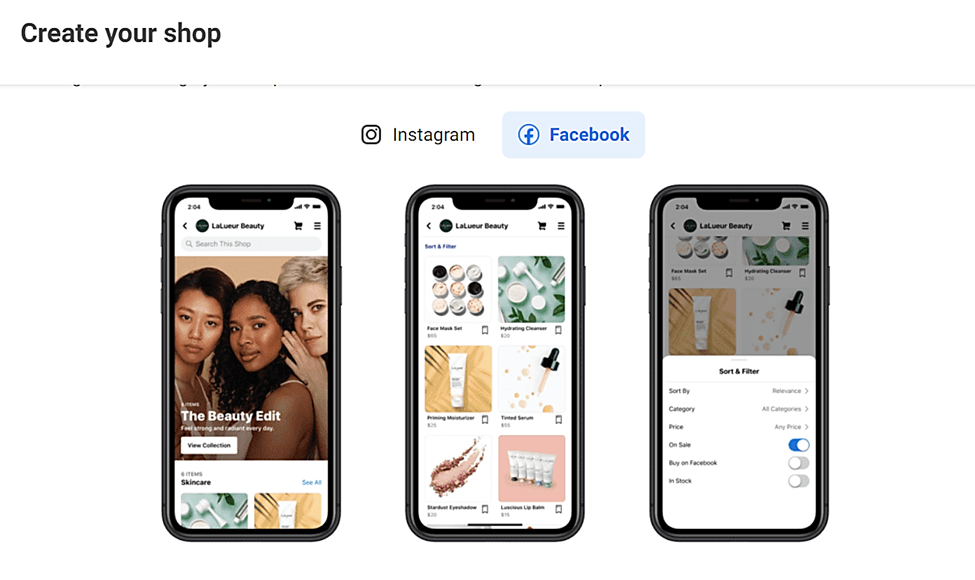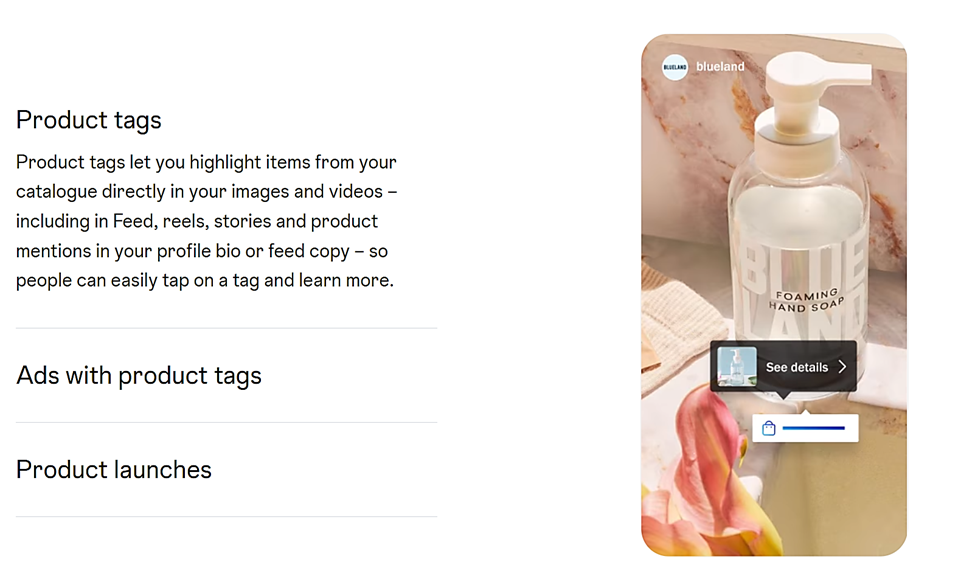If you ask your colleagues “what is social commerce?”, most of them will probably tell you it’s the selling of products and/or services on social media.
I’m sorry to say, though – that while this is the most common response to “what is social commerce?” out there, it doesn’t accurately represent what social commerce really entails.
You see, social commerce is not just about selling. It’s more of a full-on shopping experience that is revolutionizing ecommerce as we know it. 🛍️
The experience itself consists of multiple far-reaching touchpoints, which are now seeing social commerce growing three times as fast as traditional ecommerce [1]. This, in annual sales revenue, adds up to 1.3 trillion dollars, and it’s expected to further expand to 2.9 trillion by 2026 [2].
I say it’s high time that you too got in on the action.
Here’s your starter guide, where you’ll find insights into ⏩ what social commerce is, how social commerce works, and where to set up your social commerce operation.
We’ve also included ⏩ social commerce examples, as well as ⏩ social commerce platforms that you might want to try out.
What is social commerce?
Social commerce is promoting, distributing, buying, and selling items/services across social media channels. It encompasses a buyer’s entire sales journey on social media – from brand discovery and product research to engagement and conversion.
This is just one of the many business strategies that make up the larger ecommerce spectrum. Whereas traditional ecommerce covers all forms of online shopping experiences, social commerce defines the sales funnels that take place on social media.
Case in point – remember the last time you stumbled upon a fancy Instagram or Facebook Shop?
The simple act of discovering that page kickstarted your social commerce journey. And from there, you probably proceeded to explore various products on offer, before finally clicking on “buy” to make a purchase.
So widespread has social commerce grown that over 30% of web users in the US are now making purchases directly within social media platforms [3].
The trend is particularly popular with younger consumers such as Millenials and Gen Z’ers, as 77% of them are already buying stuff directly on social media [4].
Best social commerce examples
Small to large businesses are exceedingly driving sales using a wide range of social commerce touchpoints.
These six social commerce examples summarize some of their most popular architectures:
Social commerce example #1. Storefronts
Storefronts here refer to those ecommerce stores brands embed directly on their social media profiles.
They are engineered to operate as full-fledged online stores – which means these social storefronts showcase products for shoppers to discover, explore, and purchase without ever leaving the social media site.
Consumers themselves have been responding positively to social selling storefronts, with 72% of them admitting that they like the convenience of browsing and buying the products there and then [5].
Social commerce example #2. Shoppable posts
Shoppable posts are probably the first thing that comes to mind when describing what is social commerce.
They are individual social media posts that showcase products while giving viewers the chance to purchase. Brands often publish them with a CTA button that directs shoppers to the checkout when clicked.
You’ll see them integrated into all sorts of social media channels – Facebook posts, Pinterest pins, Instagram stories, Instagram reels, TikTok videos, etc.
Social commerce example #3. Shoppable ads
Shoppable ads are basically shoppable posts that have been configured as social media adverts. Such sponsored posts are accompanied by purchase buttons, through which you should be able to check out conveniently from the social networking pages.
Brands, on the other hand, get the privilege to target specific segments of consumers.
Social platforms like Facebook and Instagram use in-depth audience analytics and smart trackers to help you reach out to the right shoppers based on their interests, demographics, engagements, etc.
Social commerce example #4. Livestream shopping
Livestream shopping is an interactive sales experience, in which you engage customers in real-time through live video streams.
Your job is to showcase products to audiences and maybe answer customer queries, all the while giving them the chance to make purchases through embedded checkout links.
You could, for instance, broadcast a launch of your products via Facebook Live. The event may be accompanied by a product link that allows the audience to buy and complete transactions mid-stream.
So far, this social commerce example has generated conversions from more than 50% of US consumers [6]. They all admit to making their purchases after getting nudged by livestream hosts.
Social commerce example #5. Influencer campaigns
Influencer marketing is another tactic to prioritize after you’ve grasped the answer to “what is social commerce?”.
And the reason is, influencers are exceptionally dependable in driving brand awareness, audience engagement, lead generation, and conversion.
So persuasive are they that more than 50% of Millenials and Gen Z’ers trust their product recommendations [7]. That alone places influencers ahead of even celebrities, whose trust rate stands at 38%.
There are no rules on how and when to engage influencer campaigns in social commerce. You could hire them to advertise your products in their posts, rock your merchandise in their videos, or perhaps serve as affiliate partners.
Whichever approach you take, you should be able to achieve a return on investment (ROI) of about $5.20 for every $1 spent on the influencer marketing campaigns [8]. And if you’re as calculated as the top 13% of businesses, you could push the returns to as much as $20 for every $1 spent.
Social commerce example #6. In-app messaging
Lead engagement in social commerce is also performed through in-app messaging. This is where you send personalized direct messages (DMs) to prospects, qualified leads, and customers, with the main goal being to drive conversions.
Already, 64% of consumers today are eager to connect with brands [9]. And if you succeed in making them feel connected, 57% say that they’d be willing to increase their spending.
Such campaigns are best managed with specialized social media messaging tools. You’ll need something that can segment audiences, build automated campaigns, target recipients based on preset triggers, and generate customizable templates of social commerce examples.
The best social commerce platforms and tools
Now that we’ve defined what is social commerce and explored six case examples, it’s only logical to review the best social commerce platforms.
So far, we’ve identified two options, both of which are powered by the Meta social media ecosystem. These are what you should prioritize as you begin the social commerce journey.
Both social commerce platforms are extensively flexible, offer campaign automation, facilitate custom targeting, support omnichannel social selling, and generate in-depth analytics on key performance metrics.
Social commerce platform #1. Facebook Shops

Facebook is one of the most expansive platforms for social selling. It boasts a consumer base of more than 2.9 billion monthly active users, plus a variety of engagement, marketing, and selling tools that you could use for social commerce [10].
The most outstanding one is Facebook Shops, which is a social commerce platform for setting up custom storefronts that provide a mobile-first shopping experience. You get to feature products from your online store, set up merchandise with product collections, and customize the store’s outlook to match your brand.
Sellers can engage customers via all forms of social channels in the Meta ecosystem – including WhatsApp, Instagram Direct, Messenger, etc. Conversions are then performed through in-app checkout, after which customers get to leave product reviews.
Social commerce platform #2. Instagram Shoppable Posts

While Instagram doesn’t feature as many social commerce tools as Facebook, it wins the intuitiveness contest. This has seen it achieve an average order value of $65, which is currently the highest among all the social commerce platforms. Facebook is ranked second with $55, ahead of Twitter’s $46 and YouTube’s $38 [11].
One of the highest-converting social commerce tools here is Shoppable Posts, which allows you to convert your Instagram followers directly through Instafeed posts, live broadcasts, reels, IGTV videos, and Instagram Stories.
To set it up, you’ll need an Instagram Shop that features your products. It’s from this catalog that you’ll subsequently draw the products to tag in your Instagram Shoppable Posts.
Once customers tap on the tags, they’ll be able to view product details, as well as make purchases through Instagram Checkout.
It’s worth noting, though, that Instagram Shoppable Posts can only be accessed by merchants from 46 countries, while Instagram Checkout is exclusive to US-based sellers and buyers.
Wrapping up: What’s the best social commerce strategy for your online business? 📈
Now that we’ve painstakingly answered the question at hand – what is social commerce – plus provided you with social commerce examples, social commerce platforms, and tackled the ecommerce vs social commerce comparison, you should be able to draw up a more strategic social selling plan.
While you’re at it, keep in mind that there’s no such thing as the absolute best social commerce strategy. Each of your campaigns should, rather, be custom-tailored to your specific audiences, products, sales funnel, and social commerce platform.
Feel free to experiment with different options, or maybe even blend multiple social channels to form an omnichannel social commerce platform.
Also, remember social commerce is not restricted to Facebook and Instagram. You can also try it out on the following platforms:
- Twitter Shops
- Amazon Live
- YouTube Livestream
- TikTok Shop
- Pinterest Shopping
👉 While they may not be as advanced as Facebook and Instagram, you’ll find them to be pretty decent for social commerce purposes.
Now that you’ve read this post, are you still wondering “what is social commerce”? Hopefully not, but if you do still have questions, please use the comments section below and ask away!